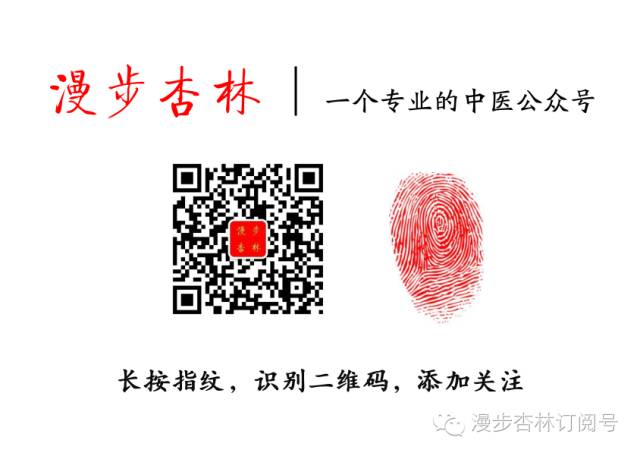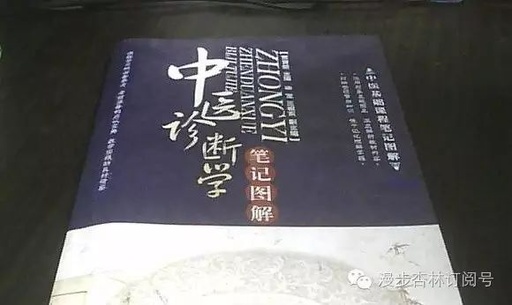II. Palpation
Palpation is a diagnostic method in which the physician directly touches and presses certain areas of the patient’s body to understand local abnormal changes, thereby inferring the location, nature, and severity of the disease.

(1) Methods and Significance of Palpation
1. Methods
① Position: During palpation, the patient should be seated or lying supine. Generally, when palpating the chest and abdomen, the patient should lie supine, relax their body, extend their legs, and place their hands beside them. The physician stands on the patient’s right side, using their right hand or both hands to perform palpation. When palpating for abdominal masses or muscle tension, the patient may be asked to flex their knees to relax the abdominal muscles, facilitating palpation.
② Techniques: The techniques of palpation can be broadly categorized into four types: touch, feel, push, and press. Touch involves lightly contacting the patient’s skin, such as the forehead and limbs, to assess temperature and moisture. Feel involves stroking the area, such as swollen regions, to determine sensation and the shape and size of masses. Push involves applying slight pressure to move the area back and forth or side to side to assess the mobility of masses and their relationship with surrounding tissues. Press involves applying pressure to areas such as the chest or abdomen to determine the presence of deep tenderness, the shape and texture of masses, and the degree and nature of swelling. In clinical practice, various techniques are used in combination, often starting with touch, followed by push and press, progressing from light to heavy, and from superficial to deep, layer by layer to understand the condition of the disease.
During palpation, the physician should be considerate of the patient, using gentle techniques to avoid sudden force. In cold weather, the physician should warm their hands before examination. Generally, start with touch, then press, with pressure increasing from light to heavy, and from superficial to deep. The patient should be encouraged to cooperate actively, reporting their sensations, while the physician observes the patient’s facial expressions to understand their discomfort. Palpation should be thorough and careful, not overlooking any area related to the disease.
2. Significance
Palpation is a part of the diagnostic process and an essential component of the four diagnostic methods. It further deepens the understanding of the location and nature of the disease based on observation, listening, and inquiry. For conditions such as chest and abdominal pain, swelling, phlegm retention, and other pathological changes, palpation can provide valuable information necessary for diagnosis and differentiation.
(2) Content of Palpation
The application range of palpation is quite broad. Clinically, it is commonly used to palpate the skin, hands and feet, chest and abdomen, and specific acupuncture points, as described below:
1. Palpation of the Skin
Palpation of the skin is performed to assess the temperature, moisture, and swelling of the skin surface throughout the body.
When Yang Qi is abundant, the body tends to be warm; when Yang Qi is deficient, the body tends to be cold.
Palpation of the skin can reveal temperature differences, and from slight warmth, one can differentiate between exterior and interior conditions. If the body feels very hot upon initial palpation but becomes less hot with prolonged pressure, it indicates heat on the surface; if prolonged pressure maintains high heat, it indicates heat from within.
Soft and moist skin that responds well to pressure indicates a deficiency condition; areas that are hard and painful to touch indicate a full condition. If light pressure causes pain, the disease is superficial; if only heavy pressure causes pain, the disease is deep.
Dry skin indicates a lack of sweat or body fluids; shriveled skin indicates insufficient body fluids; moist skin indicates sweating or no damage to body fluids.
Skin with a rough texture indicates Yin deficiency or internal dryness.
Palpating swollen areas can help differentiate between edema and emphysema. If pressing leaves an indentation that does not return immediately, it indicates edema; if the indentation returns quickly, it indicates emphysema.
Palpation can also help determine whether a condition is Yin or Yang and whether it is purulent. A hard, swollen area that is not hot indicates a cold condition; a swollen area that is hot and painful to touch indicates a heat condition. A flat, diffuse swelling indicates a deficiency condition, while a raised, firm swelling indicates a full condition. A hard area is often non-purulent, while a soft area may indicate the presence of pus. For deep muscle abscesses, the presence of pus can be determined by feeling for movement or lack thereof. The method involves placing both hands on either side of the swollen area, applying varying pressure with one hand while waiting to feel for any wave-like sensation from the other hand; if there is a wave-like sensation, it indicates the presence of pus, and the extent of the wave can indicate the amount of pus present.
2. Palpation of Hands and Feet
Palpation of the hands and feet primarily assesses temperature to determine whether the condition is deficient or full, internal or external, and to predict prognosis. If both hands and feet are cold at the onset of illness, it indicates Yang deficiency and cold excess, suggesting a cold condition. If the hands and feet are sensitive to heat, it often indicates Yang excess and heat excess, suggesting a heat condition.
Palpating the temperature of the hands and feet can also help differentiate between external and internal diseases. If the back of the hands and feet is warmer, it indicates an external febrile disease; if the palms and soles are warmer, it indicates an internal febrile disease. Additionally, the temperature of the palms can be compared with the forehead to differentiate between exterior heat and interior heat. If the forehead is hotter than the palms, it indicates exterior heat; if the palms are hotter than the forehead, it indicates interior heat. This diagnostic method is of reference significance.
In pediatrics, cold fingertips in children indicate a risk of convulsions. A hot middle finger indicates an external wind-cold condition. A cold tip of the middle finger may indicate the onset of measles. Assessing the temperature of the hands and feet can provide insight into the status of Yang Qi, which is crucial for determining the prognosis of certain Yang deficiency conditions. If the limbs are warm, it indicates that Yang Qi is still present and treatment is possible; if the limbs are cold, the prognosis is often poor.
3. Palpation of the Chest and Abdomen
The division of the chest and abdomen is as follows: the upper part is the chest, and the lower part is the abdomen. The lateral chest area from the lower abdomen to the eleventh and twelfth ribs is referred to as the hypochondrium. The area just below the xiphoid process is called the epigastrium. The upper abdomen corresponds to the stomach area. The large abdomen is above the navel, while the small abdomen is below the navel, and the lower abdomen refers to the sides of the small abdomen.
Palpation of the chest and abdomen is performed purposefully based on the patient’s condition, involving touching, pressing, and, if necessary, tapping the chest area, hypochondrium, and abdomen to understand local pathological changes.
The content of palpation of the chest and abdomen can be further divided into palpation of the virtual interior, palpation of the chest and hypochondrium, and palpation of the abdomen.
(1) Palpation of the Virtual Interior: The virtual interior is located at the apex of the heart under the left breast, where all pulses converge. Exploring the pulsation of the virtual interior can provide insight into the strength of the Zheng Qi, the nature of the disease, and the prognosis. This has been highly valued by ancient practitioners.
When palpated, a healthy virtual interior should respond gently, moving neither too tightly nor too quickly. If the pulsation is weak and feeble, it indicates internal deficiency; if it moves excessively, it indicates leakage of Zheng Qi. If it is firm and large, it indicates a critical condition.
In pregnant women or those with tuberculosis, caution is advised if the pulsation is felt. After sudden fright, extreme anger, or vigorous exercise, if the pulsation is high but returns to normal after a moment of rest, it is a physiological phenomenon. If the pulsation ceases, and other pulses also stop, it indicates a fatal condition. Palpation of the virtual interior is significant for diagnosing life and death when no pulse is felt.
(2) Palpation of the Chest and Hypochondrium: If the front chest is elevated and palpation reveals shortness of breath, it indicates a lung condition. If palpation of the chest and hypochondrium reveals distension and pain, it may indicate phlegm-heat obstruction or water retention.
The liver is located within the right hypochondrium, with its upper boundary at the midclavicular line at the fifth rib and its lower boundary at the lower edge of the right rib arch, so it is generally not palpable below the ribs. If an enlarged liver is palpated, whether soft or hard, it often indicates Qi stagnation or blood stasis; if the surface is uneven, it raises suspicion of liver cancer.
Pain in the right hypochondrium that feels hot and cannot be pressed indicates a liver abscess. In chronic malaria, a mass may appear under the hypochondrium, referred to as the mother of malaria.
(3) Palpation of the Abdomen: Palpation of the abdomen primarily assesses temperature, softness, hardness, distension, masses, and tenderness to assist in diagnosis and differentiation.
To differentiate temperature: By assessing the temperature of the abdomen, one can determine whether the disease is cold or hot, deficient or full. A cold abdominal wall that prefers warmth indicates a deficiency-cold condition; a hot abdominal wall that prefers cold contact indicates a full-heat condition.
To differentiate pain: Abdominal pain that is relieved by pressure indicates a deficiency condition; pain that is aggravated by pressure indicates a full condition; if the area is hot to the touch and the pain is unbearable, it indicates an internal abscess.
To differentiate abdominal distension: If the abdomen feels full upon palpation, with a sense of fullness and tenderness, and produces a heavy, muffled sound when tapped, it indicates fullness; if the abdomen feels distended but not full, with no tenderness and produces a hollow sound when tapped, it indicates Qi distension, often a deficiency condition.
Severe abdominal distension, resembling a drum, is termed distension. This is a serious condition that can be classified into water distension and gas distension. By placing hands on either side of the abdomen, one hand can lightly tap while the other feels for wave-like sensations. If the abdomen feels like a water-filled bag and leaves indentations upon pressure, it indicates water distension; if it sounds like a drum with no wave-like sensation and leaves no indentations, it indicates gas distension. Additionally, some severely obese individuals may have a distended abdomen that feels soft and shows no signs of umbilical protrusion or other severe symptoms, which should be differentiated from distension.
To differentiate fullness: Fullness is a subjective sensation of discomfort and distension in the heart or epigastric area. If palpation reveals softness and no tenderness, it indicates a deficiency condition; if it feels hard with resistance and tenderness, it indicates a full condition. If the epigastric area is palpable and distended, producing a gurgling sound, it indicates water retention in the stomach.
To differentiate masses: When palpating masses, attention should be paid to their size, shape, hardness, tenderness, and other characteristics.
Accumulation refers to a mass in the abdomen that may be distended or painful. However, accumulation and mass are different. Pain with a fixed location and a palpable mass that does not move indicates accumulation, which is related to blood; pain without a fixed location and a mass that is not palpable indicates a mass, which is related to Qi.
Pain in the left lower abdomen with palpable hard masses indicates the presence of fecal impaction in the intestines. Pain in the right lower abdomen with palpable masses indicates an intestinal abscess.
Parasites in the abdomen can be identified by three main characteristics: first, they feel like knots; second, prolonged palpation may cause them to shift; third, careful examination reveals a sensation of movement like that of a worm; fourth, the abdominal wall may feel uneven, with rising and falling sensations that are irregular.
4. Palpation of Acupuncture Points
Palpation of acupuncture points involves pressing specific acupoints on the body to infer certain internal diseases based on the changes and responses at these points.
Changes at acupuncture points primarily manifest as nodules or cord-like structures, or as tenderness and sensitivity. Clinical reports indicate that patients with lung diseases may have nodules at the Feishu (Lung Shu) point, while tenderness may be found at the Zhongfu (Central Palace) point. Patients with liver diseases may experience tenderness at the Ganshu (Liver Shu) or Qimen (Liver Gate) points. Gastric diseases may show tenderness at the Weishu (Stomach Shu) and Zusanli (Leg Three Miles) points. Intestinal abscesses may show tenderness at the Tianshu (Heavenly Pivot) point.
Additionally, experimental treatment through finger pressure on acupuncture points can assist in differential diagnosis. For example, in cases of abdominal pain due to biliary ascariasis, pressing on both sides of the Gallbladder Shu (Dan Shu) point may relieve pain, while pain from other causes may not respond, aiding in differentiation.
What you see may be what others need! Thank you for sharing!





↓↓↓ Scan to follow “Walking in the Apricot Forest” for more TCM knowledge


